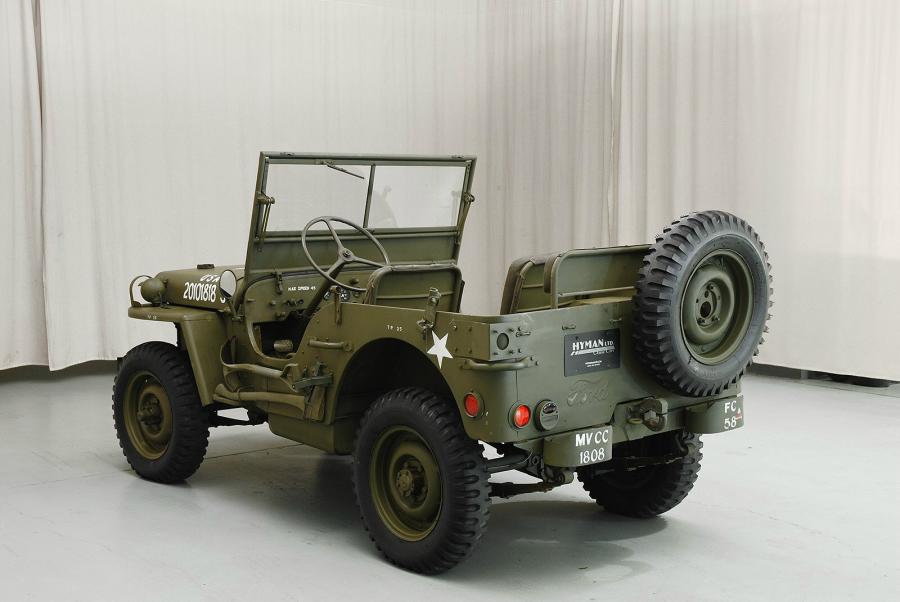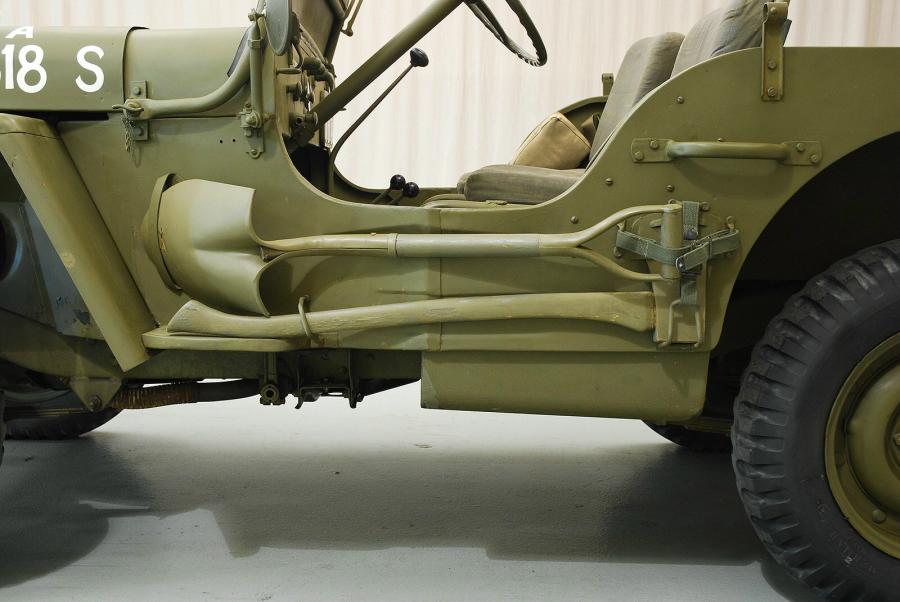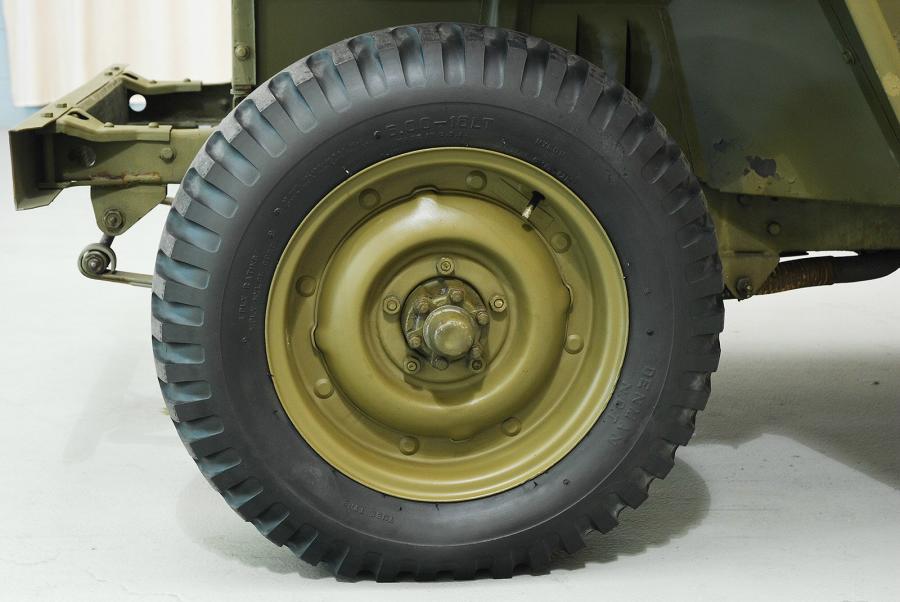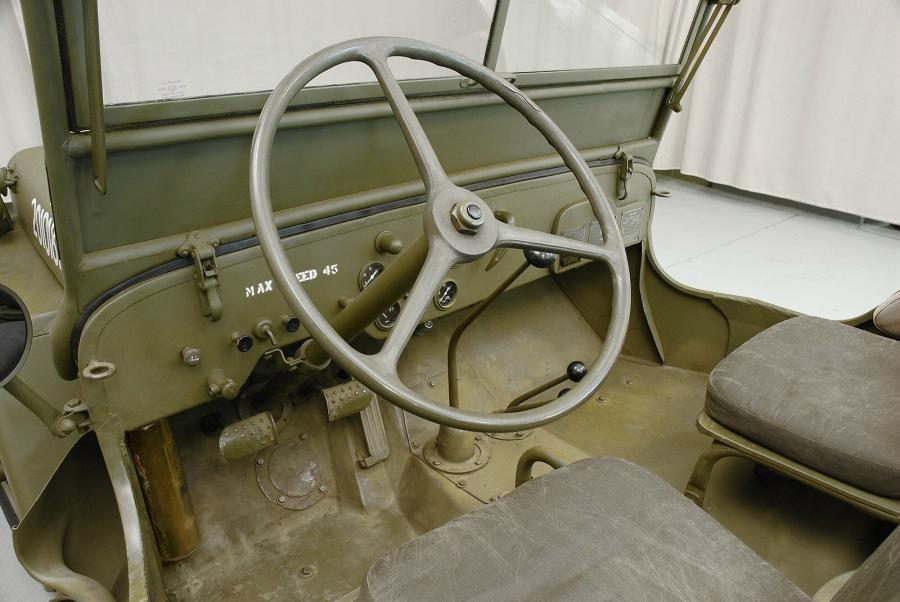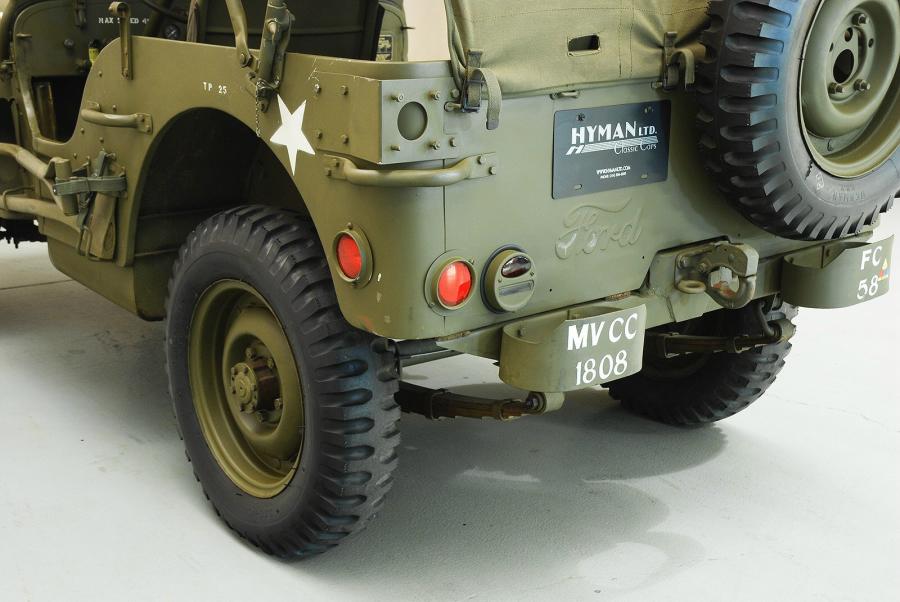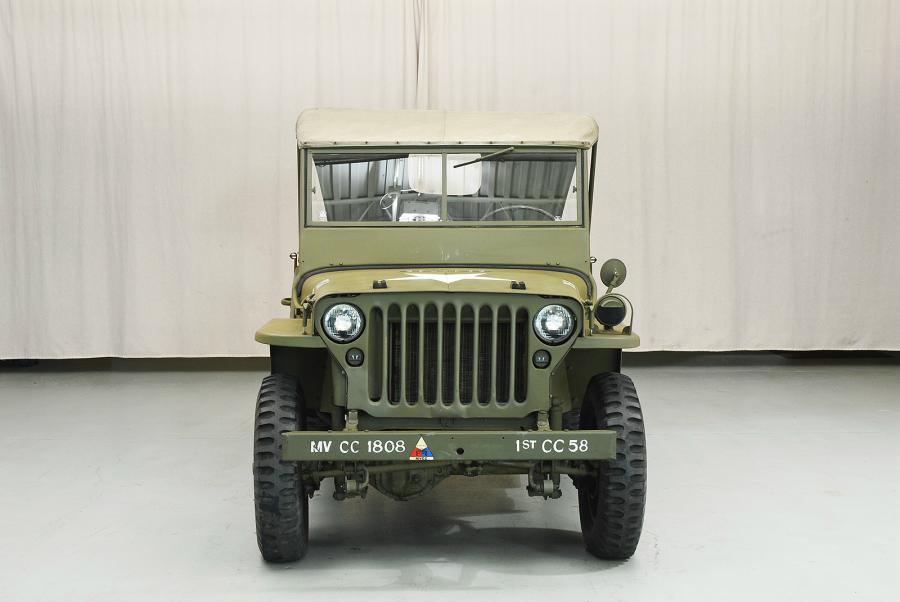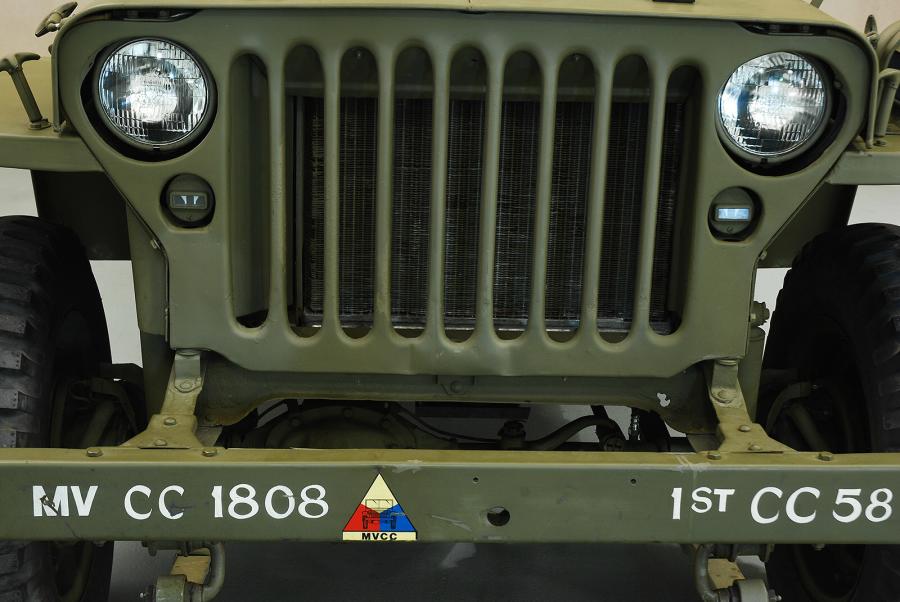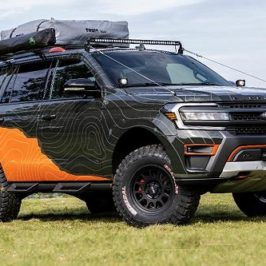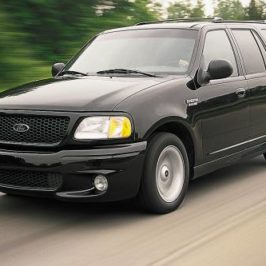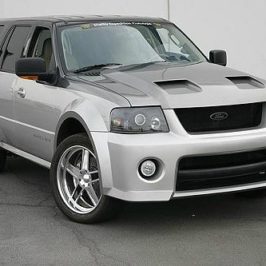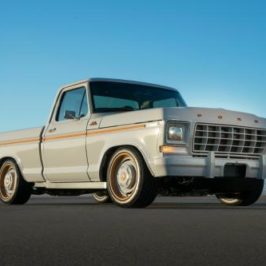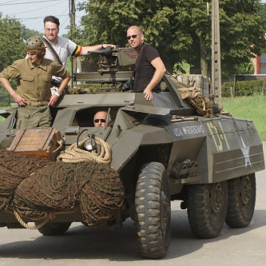
(Ford Pygmy Prototype)
As World War II was breaking out in Europe, the United States Army was rushing to come up with a light reconnaissance vehicle, small weapons carrier, and personnel transport that would replace automobiles and motorcycles with sidecars.
The requirements for this new vehicle would be:
- Weight not to exceed 1200 pounds (increased to 1275 lbs 1 July and then to 1308 lbs)
- Carry six hundred pounds of payload in cross country operations
- Wheelbase not to exceed 75 inches (increased to 80 inches 1 July)
- Height not to exceed 36 inches (increased to 40 inches 1 July)
- Ground clearance of 6.25 inches at minimum
- 4×4 drive with two speed transfer case, geared for up to 50 mph on-road and down to 3 mph off-road
- Mount for a .30 cal. machine gun
- Approach angle 45° and departure angle 40°
- Rectangular body and folding windshield
- Seating for three soldiers
- Blackout lights
on July 11, 1940 the Quartermaster Corps asked 135 companies to bid on seventy “light reconnaissance and command cars”. Initially, only American Bantam Car Company and Willys-Overland Motors entered the competition; Ford Motor Company joined later. Though Willys-Overland was the low bidder, Bantam received the bid, being the only company committing to deliver a pilot model in 49 days and production examples in 75.
Since Bantam did not have the production capacity or fiscal stability to deliver on the scale needed by the War Department, the other two bidders, Ford and Willys, were encouraged to complete their own pilot models for testing. The contract for the new reconnaissance car was to be determined by trials.
As testing of the Bantam prototype took place from September 27 to October 16, Ford and Willys technical representatives were present and given ample opportunity to study the vehicle’s performance. Moreover, in order to expedite production, the War Department forwarded the Bantam blueprints to Ford and Willys, claiming the government owned the design. By November 1940, Ford and Willys each submitted prototypes to compete with the Bantam in the Army’s trials. The pilot models, the Willys Quad and the Ford Pygmy, turned out very similar to each other and were joined in testing by Bantam’s entry.
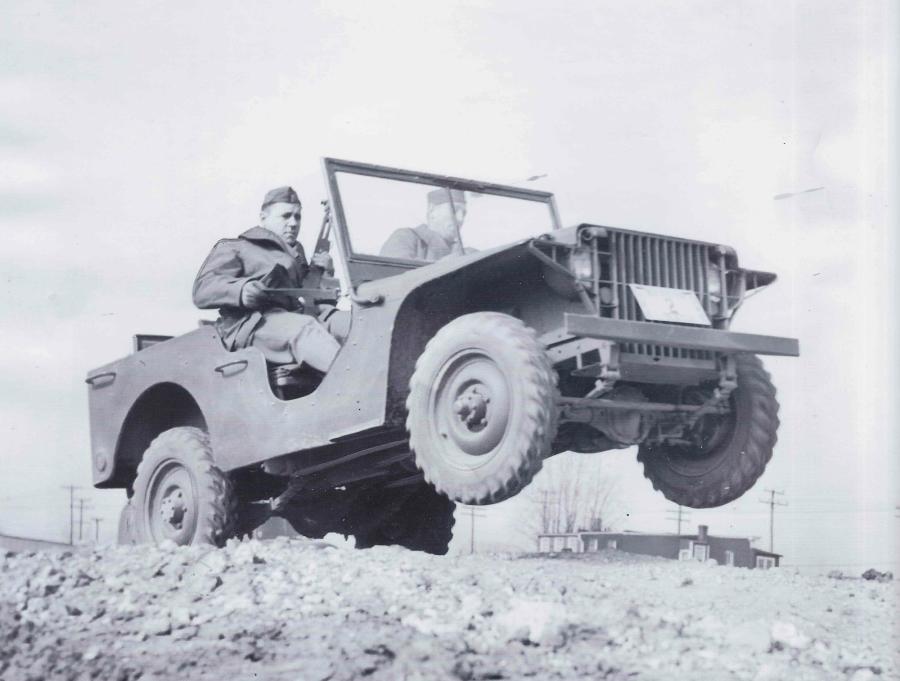
(Ford Pygmy testing)
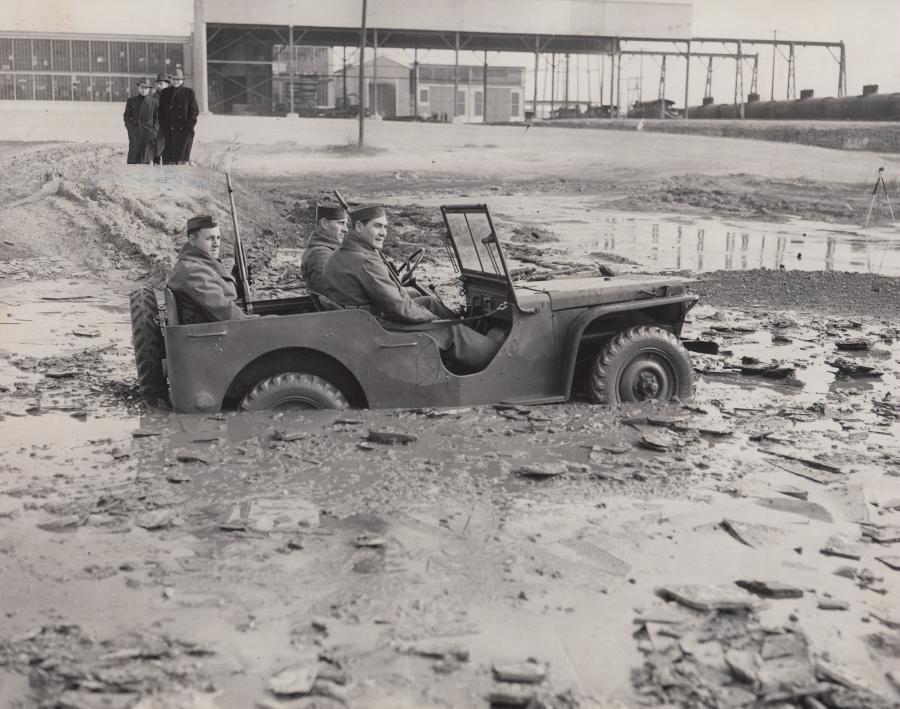
(Ford Pygmy testing)
The Pygmy was hand built in the Ford development shop in Dearborn, Michigan using parts from Ford’s commercial and agricultural lines. It pioneered such design features as the flat grill with headlamps positioned behind it for protection, an intermediate bow for the canvas top, the fuel tank mounted inside the body under the driver’s seat, and a two‐piece opening/folding windshield. The headlamps were also positioned on a hinged bracket which allowed them to be pivoted to illuminate the engine compartment at night.
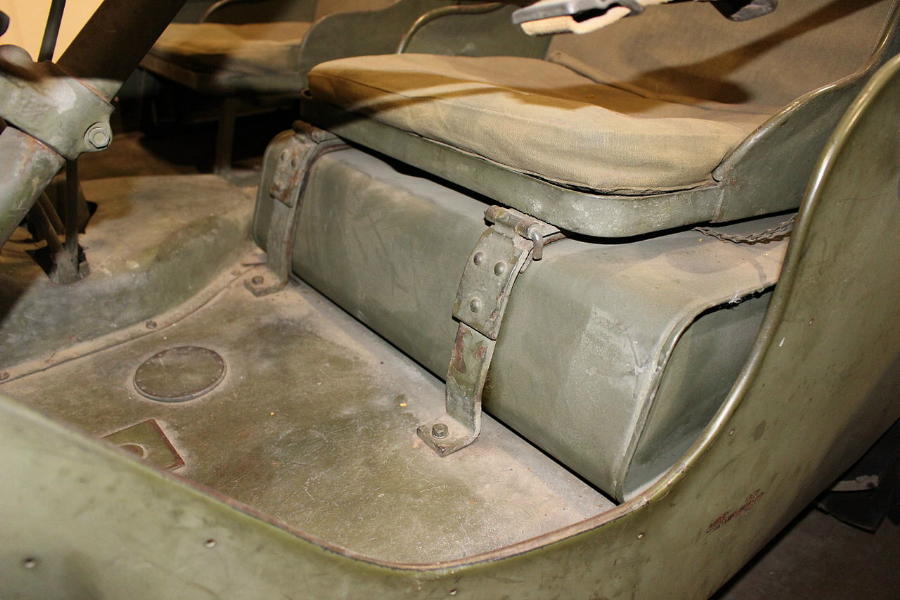
(Ford Pygmy fuel tank under seat)
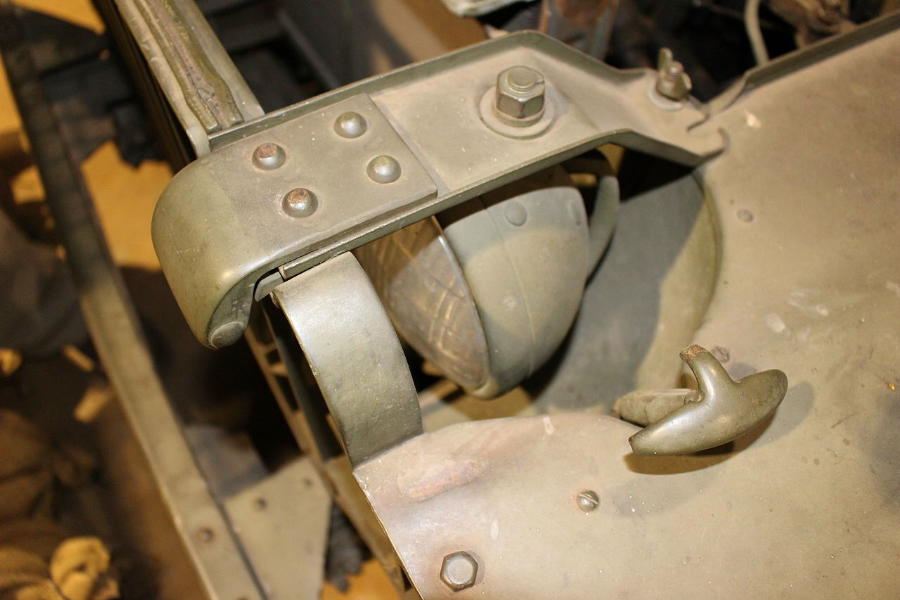
(Ford Pygmy hinged headlight)
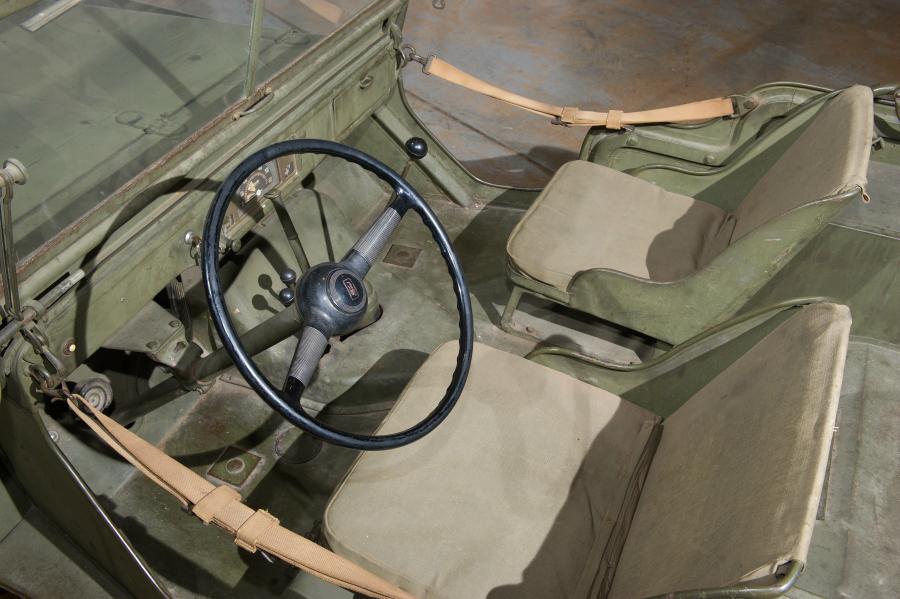
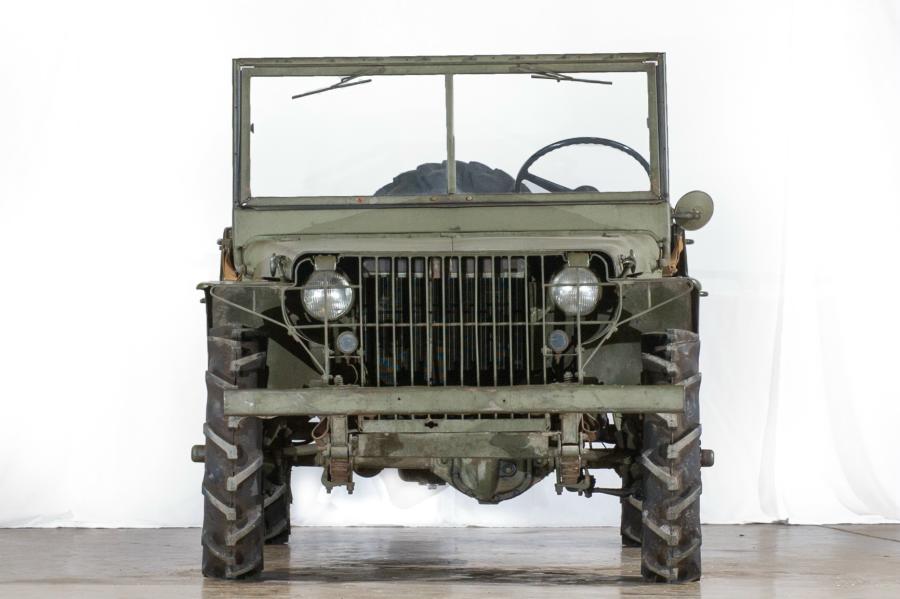
(Ford Pygmy)
Technical Specifications – 1940 Ford Pilot Model GP-No. 1 Pygmy
1/4 ton four-wheel-drive reconnaissance truck, approximate weight of 2150 pounds, approximately 42 hp, Ford 119.7 cid four-cylinder flathead engine, Spicer transfer case and axles, length: 133 inches; width: 60 inches; height: 56 inches and wheelbase 80 inches.
By November 1940, the U.S. and its armed forces were already under such pressure that all three cars were declared acceptable and orders for 1,500 units per company were given for field testing.
After reducing the vehicle’s weight by 240 pounds, Willys changed the designation to “MA” for “Military” model “A”. The Fords went into production as “GP”, with “G” for a “Government” type contract and “P” commonly used by Ford to designate any passenger car with a wheelbase of 80 in.
By July 1941, the War Department desired to standardize and decided to select a single manufacturer to supply them with the next order for 16,000 vehicles. Willys won the contract mostly due to its more powerful engine (the “Go Devil”), which soldiers raved about, and its lower cost and silhouette. The design features in the Bantam and Ford entries which represented an improvement over Willys’s design were then incorporated into the Willys car, moving it from an “A” designation to “B”, thus the “MB” nomenclature. Most notable was a flat wide hood, adapted from Ford GP.
By October 1941, it became apparent Willys-Overland could not keep up with the production demand and Ford was contracted to produce them as well. The Ford car was then designated GPW, with the “W” referring to the “Willys” licensed design.
World War II Production Numbers:
| Manufacturer | Years | Production | % Total | Test and Production Models |
| American Bantam | 1940 – 1941 | 2,676 | 0.4 % | Pilot Model, BRC and BRC-40 |
| Willys-Overland | 1940 – 1945 | 362,894 | 55.7 % | Pilot Model Quad, MA and MB |
| Ford Motor Company | 1940 – 1945 | 285,660 | 43.9 % | Pilot Model Pigmy, GP and GPW |
| Total | 1940 – 1945 | 651,230 | 100.0 % |
Approximately 51,000 were exported to the U.S.S.R. under the Lend-Lease program.
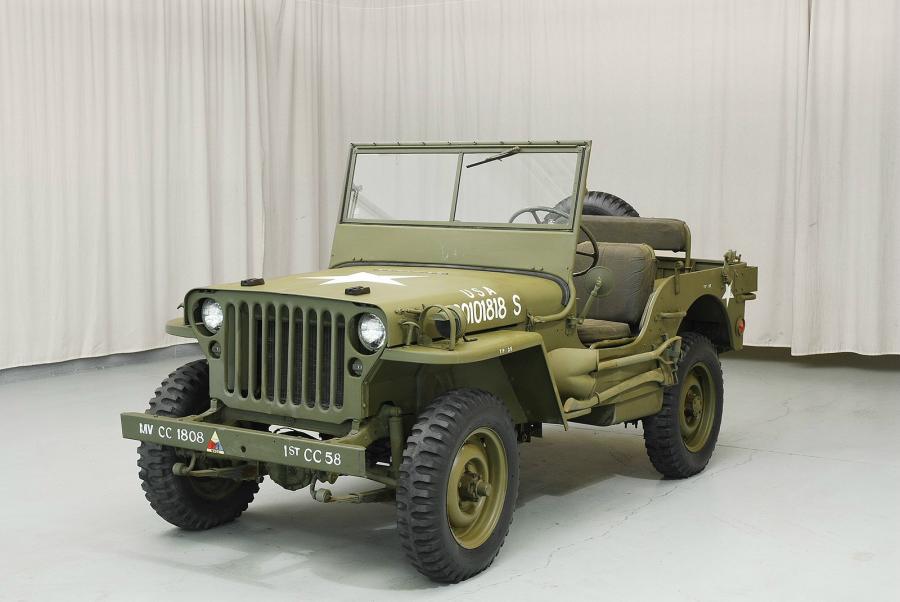
(Ford GPW)
Jeep – What’s in a name? These “light reconnaissance and command cars’ did not start out officially labeled as a Jeep. Jeep became a nickname for it, and many have theories on it’s origin.
Some believe that it originated with the Ford GP, in the same way that the contemporary HMMWV (for High-Mobility Multi-purpose Wheeled Vehicle) has become known as the Humvee.
Others think it was nicknamed after Popeye’s jungle pet “Eugene the Jeep” who was small, able to move between dimensions, and could solve seemingly impossible problems (Popeye was a popular comic at this time).
The word jeep, however, was used as early as 1914 by US Army mechanics assigned to test new vehicles. In 1937, tractors which were supplied by Minneapolis Moline to the US Army were called jeeps. The initial Ford Pygmy prototype had tractor tires and used parts from Ford’s agricultural lines, so these vehicles could have received the nickname when they were first delivered for testing.
After the war Ford unsuccessfully sued Willys for the rights to the term “Jeep”, leaving Willys with full rights to the name.
The pilot vehicles were the property of the manufacturer and after testing was complete, the army returned them. The Pygmy was donated to the Henry Ford Museum by Henry Ford II in 1948. It was acquired at auction by a private collector in 1982, and is now in the collection of The U.S. Veterans Memorial Museum in Huntsville, Alabama where it is preserved in virtually original un-restored condition.
Ford and The Jeep Grill – Willys made its first 25,000 MB Jeeps with a welded flat iron “slat” radiator grille. It was Ford who first designed and implemented the now familiar and distinctive stamped, vertical-slot steel grille into its Jeep vehicles, which was lighter, used fewer resources, and was less costly to produce. Along with many other design features innovated by Ford, this was adopted by Willys and implemented into the standard World War II Jeep by April 1942.
In order to be able to get their grille design trademarked, Willys gave their post-war jeeps seven slots instead of the original Ford nine-slot design. Through a series of corporate takeovers and mergers, AM General Corporation ended up with the rights to use the seven-slot grille as well, which they in turn extended to Chrysler when it acquired American Motors Corporation, then manufacturer of Jeep, in 1987.
How to differentiate a GPW from a Willys MB:
Check the engine block for a serial number starting with either “MB” for Willy’s or “GP’ or “GPW” for Ford.
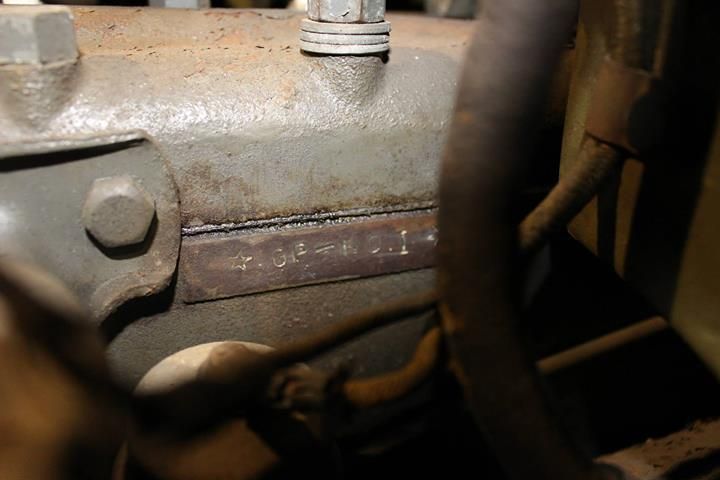
On earlier models, the left side of the rear panel has “Ford” or “Willys” stamped into it. The rear wheel well tool boxes have either a rectangular (Ford) or a circular (Willys) depression where the lock button is installed. (Front bumper): On the GPW, the front bumper has three holes in the bumper, the crank hole is just off center, and there are two smaller holes in the bumper at the end of the frame horns. Another major observable difference between the Ford and the Willys is the first cross member of the frame, just behind the grille. On the Willys it is a curved tube, while on the Ford it is an inverted, stamped “U” member which pretty much goes straight across the front.
Although Ford built their own frames for the GPW, the initial production used frames built by the A.O. Smith Company in Wisconsin. Smith was the contract builder for Willys, and Ford’s engineers were unable to get their version going in time for their early production, so relied on frames purchased from Smith for a few months. In total, there were several thousand Fords built with the Smith frames, referred to as “transitional” frames by modern restorers.
Ford Pygmy Video:


Ford GPW Photos:
Click the photos to enlarge. Click the arrows to load more

